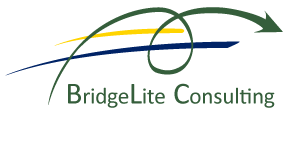It happened again.
I was deep into a conversation discussing a transition challenge with a client over the phone. The issue was complex and paying attention was definitely required. We decided to sync calendars and find a time to meet. I thought viewing the calendar on my cell phone would be the fastest and least distracting method to set up the appointment, so I began to look for the phone as we continued to talk.
I couldn’t find it anywhere.
Where had I put it? Did I lose it? I checked all around me. Purse, desk – even the trash can. Now I was mentally multi-tasking and not laser focused as I needed to be. I finally gave up looking and set the meeting time up via computer. As we said our goodbyes, I found the cell phone.
I was talking on it!
As I leaned over in the chair laughing at myself, the expression, “as plain as the nose on your face” popped into mind. I was so focused on the conversation; I missed the critical data right in front of me – that I was holding the phone. This happens more than we might realize – or admit… [C’mon, I’ve heard some of your stories and know I’m not the only one…]
Psychologists call this phenomenon:
scotoma [skɒˈtəʊmə]
A mental blind spot; inability to understand or perceive certain matters
When working through a change process or mapping out a transition plan for people, sometimes mental blind spots or hidden bias are the worst enemies. Blind spots are a partiality (point of view, not prejudice) that can be apparent to others but are mostly hidden from our vantage point. These areas are generated from predisposition (bias) about what we expect to occur or see.
When change has to happen quickly, efficiently, and stick the first time – blind spots can derail the process if unaddressed. Steps or vital communication can be left out. People may not be included that need to be. As the end goal is reached, you might have to play catch-up and go back into the process to deal with the areas affected by the blind spot.
If time is of the essence, one way to deal with blind spots is to partner with a trusted adviser that can see areas you cannot. A Complementary Opposite. Someone who can be back-to-back with you; providing data and insights in areas you cannot see for the betterment of the change project and end result. Once you find this person, ask questions and listen to what is shared.
Over time, as your complementary opposite sheds light on blind spots, they become easier to recognize. In the meantime, your change initiative has a better chance to stick the first time.
Have you ever had a complementary opposite help you succeed where you might have failed otherwise?
Was it difficult to just listen to the feedback and not argue about how right you really were?

